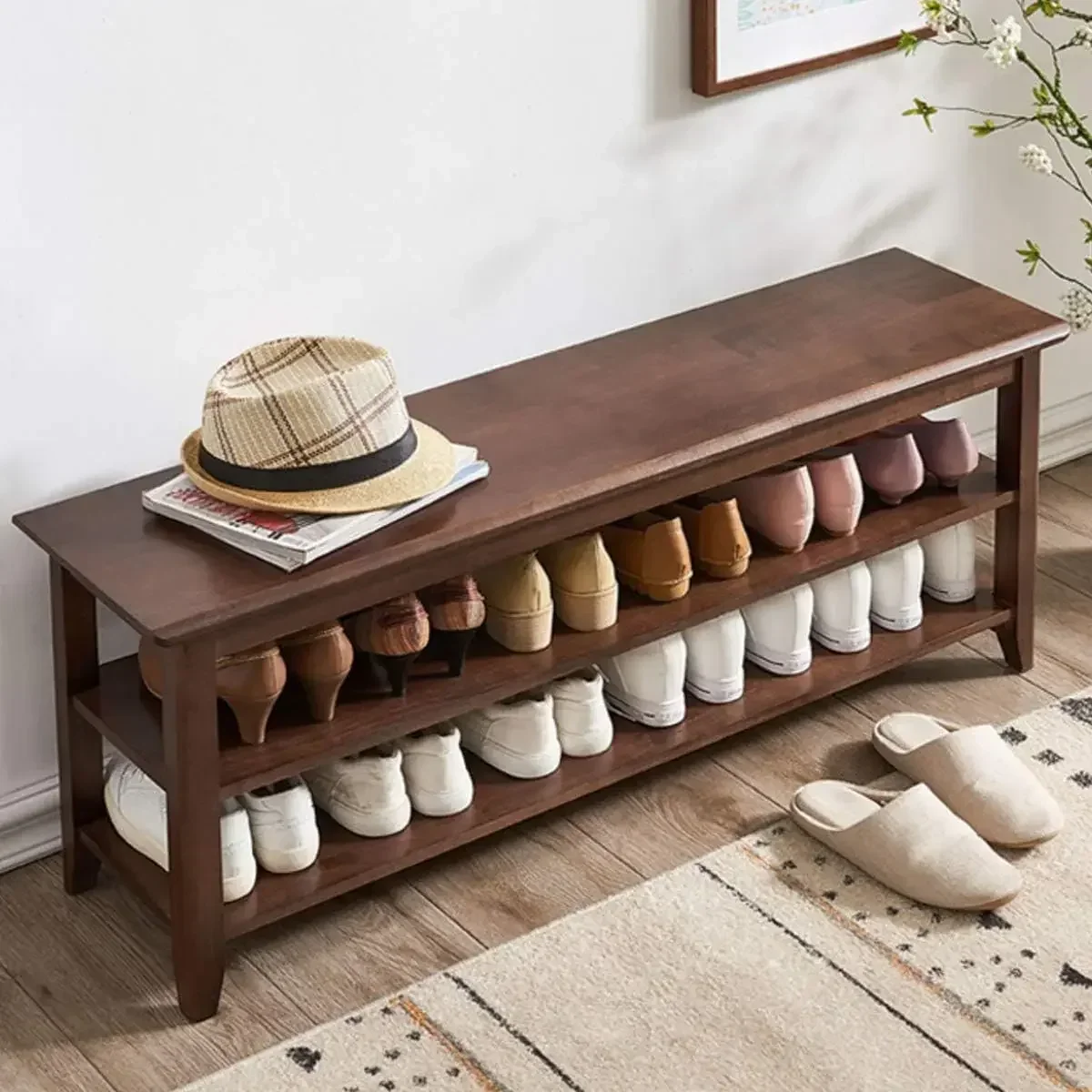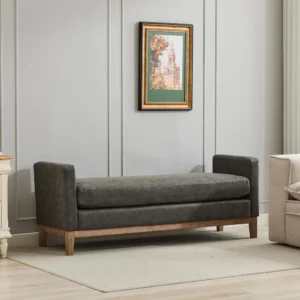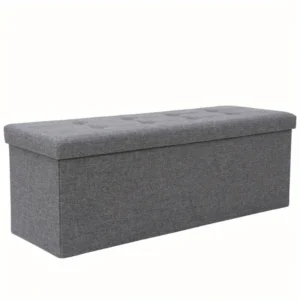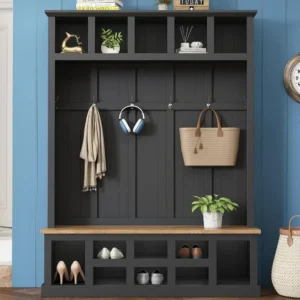Finding the Perfect Fit: Standard Hallway Bench Dimensions
Hallway benches serve as both functional and decorative pieces in home entryways, providing a convenient spot to sit while putting on or taking off shoes while adding style to your entrance area. Understanding the typical dimensions of these versatile furniture pieces is essential before making a purchase decision.
Most hallway benches follow standard sizing guidelines that balance comfort, functionality, and space efficiency. If you’re wondering about the typical measurements, here’s what you need to know:
- Standard height: 17-20 inches (43-51 cm) – optimal for comfortable seating
- Standard width/length: 36-60 inches (91-152 cm) – varies based on available space and seating needs
- Standard depth: 14-20 inches (35-51 cm) – balances seating comfort with hallway clearance
These dimensions can vary depending on the specific design, functionality, and manufacturer of the bench. The hallway benches functionality often dictates size variations, with storage benches typically being larger than simple seating options.
When browsing through standard bench options, you’ll notice these measurements serve as a starting point, with specialized designs offering different proportions based on their intended use and features.
Why Choosing the Right Bench Size Matters for Your Hallway
Selecting the correct bench dimensions goes beyond just making sure it fits in your space. The right size affects both the functionality of your entryway and the overall aesthetic of your home.
A properly sized bench ensures:
- Comfortable traffic flow – maintaining a minimum walkway clearance of 36 inches (91 cm) prevents congestion
- Proper proportion – a bench that’s too large overwhelms the space while one that’s too small looks out of place
- Functional use – adequate seating space for intended users without wasted space
- Door clearance – ensuring doors can open fully without obstruction
Hallway benches that are too large can create hazardous bottlenecks in high-traffic areas, forcing people to squeeze by and potentially knocking items off walls. Conversely, choosing a bench that’s too small may not provide adequate seating or storage for your household needs.
The principles of sizing for specific hallway types directly impact both the visual balance and practical functionality of your entryway. Finding this balance is essential for creating a welcoming, functional space.
Height Considerations: Finding Your Comfortable Seating Level
The height of your hallway bench significantly impacts comfort when sitting down or standing up. This dimension deserves careful consideration, especially for households with diverse needs or specific usage requirements.
The ideal bench height depends on who will be using it and its primary purpose:
| User/Purpose | Recommended Height | Notes |
|---|---|---|
| Standard Adult Seating | 17-20 inches (43-51 cm) | Mimics standard chair height for comfortable posture |
| Child-Friendly Options | 14-16 inches (35-41 cm) | Allows children’s feet to touch the floor comfortably |
| Storage-Focused Designs | 20-22 inches (51-56 cm) | Provides more interior space for storage compartments |
Bench height also affects how it interacts with other hallway elements. For instance, if you plan to install coat hooks or wall art above your bench, the height needs to leave adequate space for these features while maintaining visual harmony.
For elderly users or those with mobility concerns, a slightly higher bench (19-20 inches/48-51 cm) makes sitting down and standing up easier by reducing the distance of movement. Meanwhile, ergonomic height considerations suggest that the ideal sitting position allows feet to rest flat on the floor with knees at approximately a 90-degree angle.
Depth Dimensions: Balancing Comfort and Space Efficiency
Bench depth is a critical dimension that directly impacts both seating comfort and hallway navigability. Finding the right balance ensures your bench is both practical to use and doesn’t obstruct movement.
Typical depth dimensions vary based on intended use and available space:
- Narrow hallway bench depths: 12-15 inches (30-38 cm) – prioritizes walkway space in tight areas
- Standard comfort depth: 16-18 inches (41-46 cm) – provides adequate support for comfortable sitting
- Storage-optimized depth: 18-20 inches (46-51 cm) – maximizes internal storage volume
For narrow hallways, space-efficient bench options with reduced depth can be crucial for maintaining proper clearance. As a general rule, you should maintain at least 36 inches (91 cm) of clear walkway space in front of or beside the bench to allow for comfortable passage.
The depth also influences how you sit on the bench. A depth of at least 16 inches (41 cm) supports most adults’ thighs adequately, allowing for comfortable sitting without feeling perched on the edge. However, if the bench will primarily be used for quick tasks like putting on shoes, a narrower depth of 14-16 inches (35-41 cm) may be preferable to maximize space efficiency.
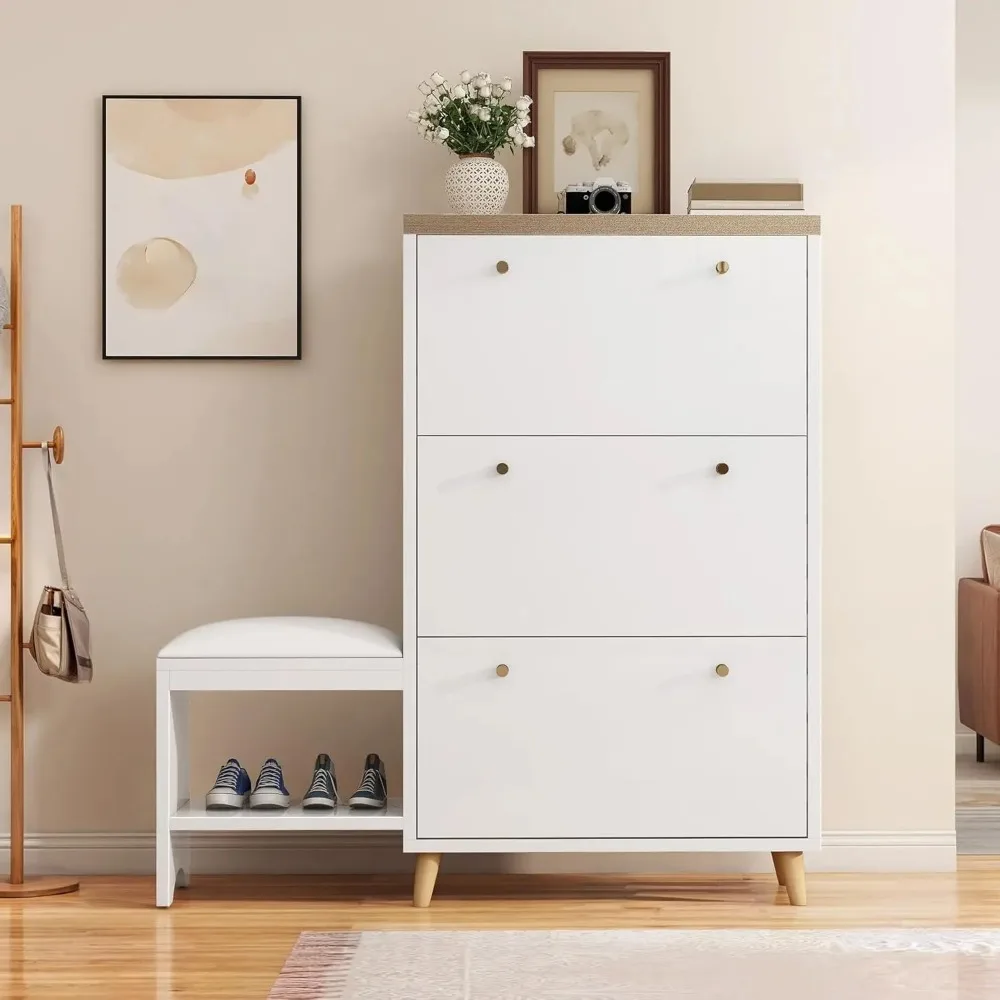
Length Options: How Many People Need Seating?
The length of your hallway bench determines how many people can sit comfortably at once, making it an important factor to consider based on your household size and entertaining habits.
Typical length ranges by seating capacity include:
- Small/Compact (1 person): 24-36 inches (61-91 cm) – ideal for tight spaces or single-person households
- Medium (2 people): 42-48 inches (107-122 cm) – comfortable for average families
- Large (3+ people): 54-72 inches (137-183 cm) – suitable for larger households or frequent entertaining
A helpful rule of thumb is to allow approximately 18-24 inches (46-61 cm) of seating width per person for comfortable use. This ensures everyone has adequate personal space when the bench is fully occupied.
When considering length, remember that longer benches provide more storage capacity in models with built-in compartments. However, they also require more wall space and can dominate smaller entryways. For compact spaces, compact bench solutions with clever storage features can provide functionality without overwhelming the area.
The bench length should also harmonize with nearby architectural elements. For example, if positioned under a window, the bench length should either match the window width or be proportionally related to it for visual cohesion.
How to Measure Your Space for the Perfect Hallway Bench
Finding the right bench starts with accurate measurements of your available space. Follow these steps to ensure your new bench fits perfectly:
Gather your tools: You’ll need a tape measure, notepad, pencil, and masking or painter’s tape.
Measure the available wall space where the bench will go, accounting for any obstacles like vents, outlets, or light switches.
Determine walkway clearance by measuring from the wall to the opposite wall or obstacle. Subtract at least 36 inches (91 cm) for comfortable passage to find your maximum bench depth.
Map out the floor space using painter’s tape to create an outline of your potential bench dimensions. This visualization helps you see how the bench will affect traffic flow.
Consider door clearance by fully opening any nearby doors to ensure they won’t hit the bench. Mark the door swing arc on the floor if needed.
Check ceiling height if considering a bench with a tall back or attached coat rack to ensure adequate vertical clearance.
Record all measurements including height of any windows or wall features that might interact with the bench.
A common measurement mistake is forgetting to account for baseboards, which can push the bench away from the wall slightly. For a flush fit, measure the baseboard height and depth or look for benches with a notched back design.
Understanding efficient space planning principles can help you make the most of your measurements, ensuring your bench enhances rather than hinders your hallway functionality.
Hallway Bench Types and Their Unique Size Requirements
Different styles of hallway benches serve various purposes and consequently have different dimensional requirements. Understanding these variations helps you select the right type for your specific needs.
| Bench Type | Typical Dimensions | Key Features |
|---|---|---|
| Simple Seating Bench | H: 17-20” (43-51cm) W: 36-48” (91-122cm) D: 14-16” (35-41cm) | Focused on seating comfort, minimal footprint |
| Storage Bench with Lift-Top | H: 18-22” (46-56cm) W: 36-60” (91-152cm) D: 16-20” (41-51cm) | Higher to accommodate storage space, wider for greater capacity |
| Shoe Storage Bench with Cubbies | H: 18-24” (46-61cm) W: 42-60” (107-152cm) D: 16-18” (41-46cm) | Open compartments beneath seating surface, sometimes taller |
| Hall Tree with Integrated Bench | H: 60-80” (152-203cm) W: 36-48” (91-122cm) D: 16-20” (41-51cm) | Combines seating with vertical storage, substantial footprint |
| Mudroom-Style Organization Bench | H: 18-22” (46-56cm) W: 48-72” (122-183cm) D: 16-24” (41-61cm) | Robust construction, divided sections, larger overall size |
The storage bench options typically require greater depth and height to maximize interior volume. Similarly, integrated bench systems need adequate height clearance for their upper components while providing sufficient seating space below.
When selecting a bench type, consider both your available space and functional priorities. Storage-focused designs sacrifice some seating comfort for organizational benefits, while simpler seating benches maximize comfort but offer fewer storage solutions.
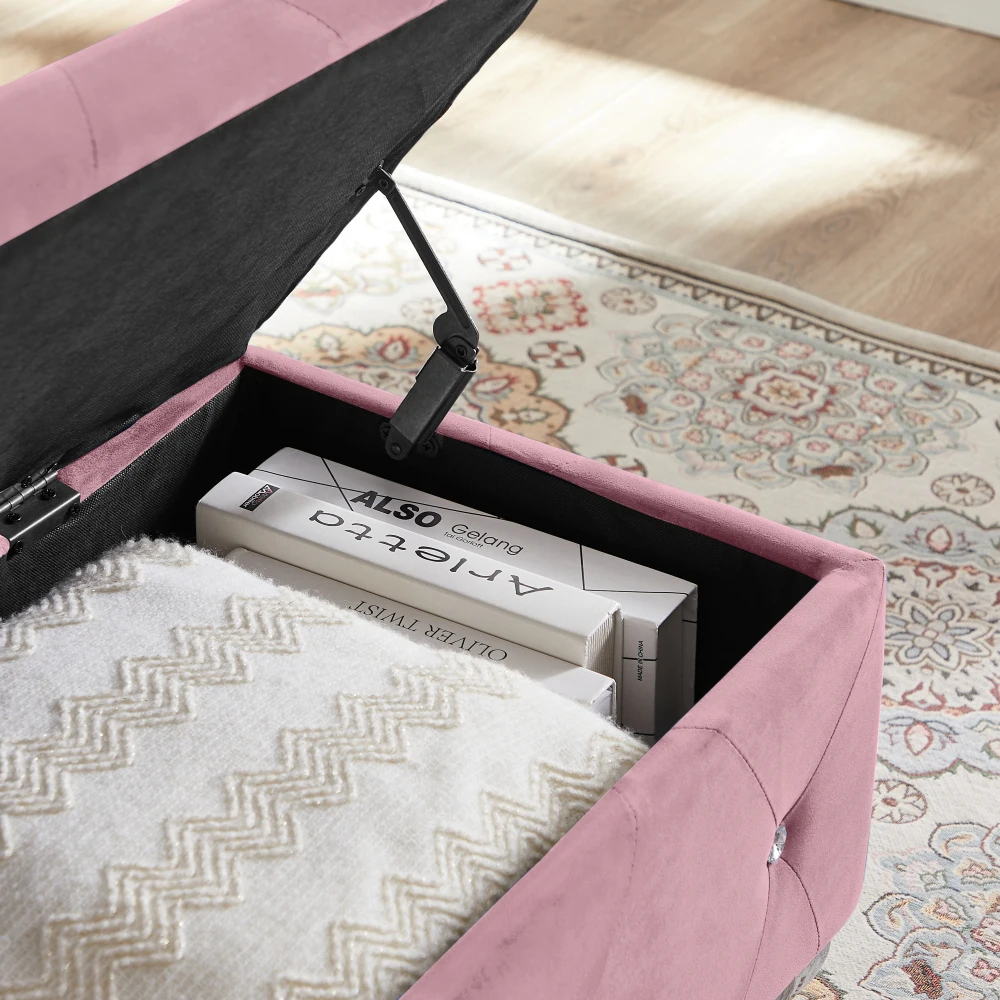
Storage Options and How They Affect Bench Dimensions
The storage features of a hallway bench directly impact its size requirements. Understanding these relationships helps you select a bench that provides adequate storage without overwhelming your space.
Storage considerations affect bench dimensions in several ways:
- Height increases with hidden compartments under lift-up seats (typically adding 2-4 inches/5-10 cm)
- Depth expands to accommodate shoe storage (requiring at least 12 inches/30 cm of interior depth)
- Width extends with drawer systems (typically needing at least 36 inches/91 cm for functionality)
Storage capacity estimates by bench size:
* Small benches (36” wide): Storage for 2-3 pairs of shoes or seasonal accessories
* Medium benches (48” wide): Room for 4-6 pairs of shoes or multiple storage baskets
* Large benches (60”+ wide): Can hold 8+ pairs of shoes, multiple baskets, or divided storage sections
Different storage types have specific dimensional requirements:
* Shoe cubbies need at least 4-6 inches (10-15 cm) of height per slot and 10-12 inches (25-30 cm) of depth
* Hidden storage compartments benefit from at least 6-8 inches (15-20 cm) of interior height
* Drawer systems require smooth-gliding mechanisms, adding 1-2 inches (2.5-5 cm) to overall width
Innovative storage designs continue to evolve, offering more efficient organization within compact dimensions. For households with multiple members, consider benches with divided storage sections that allow each person to have a designated space for their belongings.
Entryway Bench with Cushion, Mudroom Bench with Cushion, Shoe Bench for Entryway
$1,186.63 Select options This product has multiple variants. The options may be chosen on the product pageCoat Rack Shoe Bench, Corner Entryway Bench, Corner Hall Tree, Shoe Bench for Entryway
$313.58 Select options This product has multiple variants. The options may be chosen on the product pageEntryway Bench with Back, Modern Entryway Bench, Shoe Bench for Entryway
Price range: $463.13 through $474.44 Select options This product has multiple variants. The options may be chosen on the product pageEntryway Bench with Shelf Storage, Shoe Bench for Entryway, Shoe Storage Bench
$194.08 Select options This product has multiple variants. The options may be chosen on the product pageCorner Entryway Bench, Entryway Bench with Cushion, Modern Entryway Bench, Shoe Bench for Entryway
$476.34 Select options This product has multiple variants. The options may be chosen on the product pageBench with Hooks and Storage, Entryway Hall Tree, Mudroom Bench with Cubbies, Mudroom Bench with Shoe Storage
$818.38 Select options This product has multiple variants. The options may be chosen on the product page
Space Optimization: Benches for Narrow vs. Wide Hallways
The width of your hallway significantly influences the type of bench that will work best in your space. Different configurations can maximize functionality regardless of your spatial constraints.
For narrow hallways (under 42 inches/107 cm wide):
* Choose benches under 14 inches (35 cm) deep
* Consider wall-mounted options that float above the floor
* Look for tapered or angled legs that create more foot space underneath
* Select benches with vertical storage to utilize wall space efficiently
For wider hallways (over 60 inches/152 cm):
* Explore L-shaped or corner configurations that maximize seating
* Consider island-style benches that can be accessed from multiple sides
* Add complementary storage pieces like console tables or cabinets
* Use the bench as a room divider to define separate functional zones
Space-efficient designs can transform even the narrowest hallways into functional entryways. For extremely limited spaces, look for multi-purpose solutions like wall-mounted folding benches that can be collapsed when not in use or narrow console tables with pull-out seating.
In wider spaces, the bench can become a more prominent design element rather than simply a space-saving solution. This allows for more decorative details and substantial proportions that create a stronger visual impact.
Aesthetic Considerations: Visual Balance and Design Harmony
Beyond practical dimensions, the visual proportions of your hallway bench significantly impact your entryway’s overall aesthetic. Achieving visual balance requires consideration of scale, style, and surrounding elements.
Key aesthetic principles to consider:
* A bench should occupy approximately 30-60% of the wall length it sits against
* The bench height should maintain a 2:3 or 3:5 ratio with any artwork hung above it
* Material weight should match the visual weight of the space (heavier, darker materials for larger spaces)
* Style details should reflect the architectural character of your home
Ceiling height affects appropriate bench size as well:
* For 8-foot (244 cm) ceilings: Keep bench height under 20 inches (51 cm) for balance
* For 9-10 foot (274-305 cm) ceilings: Taller bench designs up to 24 inches (61 cm) can work well
* For vaulted ceilings: Consider hall tree or high-back options to draw the eye upward
Color and material choices significantly impact perceived size. Lighter finishes and transparent elements make a bench appear less imposing, while darker, solid materials create a stronger visual presence. These design integration tips can help your bench complement rather than compete with your existing décor.

Customization Options: When Standard Sizes Don’t Fit Your Space
Sometimes standard bench dimensions won’t work for unusual hallway configurations. Customization and alternative solutions can help address these challenging spaces.
Consider these options for non-standard spaces:
* Modular bench systems that can be configured to fit unusual dimensions
* Corner benches that maximize otherwise awkward spaces
* Built-in benches that integrate with wall features or architectural elements
* Floating benches that can be mounted at custom heights and lengths
Unusual architectural features can be accommodated through:
* Notched bench backs that work around wall features or moldings
* Tapered ends that navigate awkward corners or doorways
* Adjustable-height legs for uneven floors
* Sectional bench pieces that can be arranged to fit irregular spaces
For particularly challenging areas, solutions for unusual spaces might include custom-built options that perfectly fit your specific dimensions. While potentially more expensive, custom pieces ensure maximum functionality and aesthetic integration with your unique space.
The flexibility of modular systems offers a middle ground between standard sizes and fully custom pieces. These can often be reconfigured as needed if your space requirements change over time.
Expert Tips for Maximizing Comfort and Functionality
Interior design professionals recommend these strategies for selecting the ideal hallway bench:
- Position benches at least 18 inches (46 cm) away from doors to prevent blocking access
- For maximum comfort, choose a seat depth of 16-18 inches (41-46 cm) with a slight backward tilt
- Select materials based on expected wear patterns—harder surfaces for high-traffic areas, softer for comfort
- Consider adding 1-2 inch (2.5-5 cm) thick cushions to hard benches for comfort without significantly altering height
- Leave 4-6 inches (10-15 cm) of space on either side of the bench for visual breathing room
- For families with children, rounded corners and sturdy construction prevent injuries and damage
For enhanced usability:
* Place a bench where it naturally supports your daily routine (near the door you use most)
* Combine seating with hanging storage at approximately 60 inches (152 cm) above the bench
* Include a small surface near the bench for keys and everyday items
* Consider materials that are easy to clean in entryways that see outdoor elements
These practical organization approaches from Nested Goods can significantly improve your entryway’s functionality while maintaining an appealing aesthetic. The goal is creating an entryway that supports your lifestyle while enhancing your home’s overall design.
Are Backless Benches Better for Small Hallways?
Backless benches offer distinct advantages for compact hallways but come with certain trade-offs compared to their backed counterparts.
Advantages of backless designs in small spaces:
* Create a more open, airy visual impression
* Typically 4-8 inches (10-20 cm) shallower than benches with backs
* Can be used from either side in central hallway placements
* Don’t block wall features like wainscoting or artwork
However, backed benches provide:
* Greater sitting comfort, especially for longer periods
* A more defined, finished appearance
* Better support for elderly users or those with mobility concerns
* Natural protection against wall scuffs and marks
For truly tight spaces, backless designs almost always work better, as they can be as narrow as 12 inches (30 cm) deep while remaining functional. The visual lightness of these pieces helps prevent the claustrophobic feeling that can occur with larger furniture in compact areas.
Hybrid options like benches with backrests that feature partial backs or lower profiles offer a middle ground, providing some back support while minimizing visual and physical bulk.
How Do Bench Dimensions Change for Mudroom Applications?
Mudroom benches typically require different dimensions than standard hallway benches due to their specialized functionality and higher-traffic environment.
Key dimensional differences for mudroom benches include:
* Greater height (20-22 inches/51-56 cm) to accommodate larger storage beneath for boots and outdoor gear
* Increased depth (18-24 inches/46-61 cm) for more substantial storage capacity
* Wider individual seating sections (24-30 inches/61-76 cm per person) to accommodate bulkier outdoor clothing
* Higher backs (if present) at 36-48 inches (91-122 cm) for coat hooks and organization
Material considerations also differ for these heavy-duty spaces:
* More robust construction using solid woods or metal frames
* Water-resistant finishes that withstand moisture from boots and outerwear
* Easier-to-clean surfaces that can handle dirt and debris
For spaces that serve as both hallway and mudroom, finding the right balance is essential. Understanding the differences between specialized mudroom considerations and standard hallway needs helps determine which features to prioritize based on your household’s primary usage patterns.
What Materials Work Best for Different Sized Hallway Benches?
The size of your hallway bench influences which materials will perform best both structurally and aesthetically.
| Bench Size | Recommended Materials | Considerations |
|---|---|---|
| Small (24-36”/61-91 cm) | Metal frames, lightweight woods, rattan | Needs less structural support, visual lightness |
| Medium (42-48”/107-122 cm) | Solid wood, engineered wood, upholstered | Balance of strength and weight |
| Large (54”+/137+ cm) | Hardwoods, metal-wood combinations | Requires significant structural integrity |
For storage benches, material selection is particularly important:
* Lift-top storage requires durable hinges and solid frame construction
* Drawer systems need smooth-gliding hardware and rigid box construction
* Cubbies benefit from scratch-resistant materials that withstand shoe contact
Wood material options remain the most popular choice for their warmth and versatility, with oak, maple, and pine offering different aesthetic and durability profiles. For contemporary spaces, metal frames combined with upholstered seats provide modern appeal with excellent structural support.
When selecting materials, consider both the visual weight (how substantial it appears) and the actual weight, particularly if you might need to move the bench occasionally for cleaning or rearranging.

